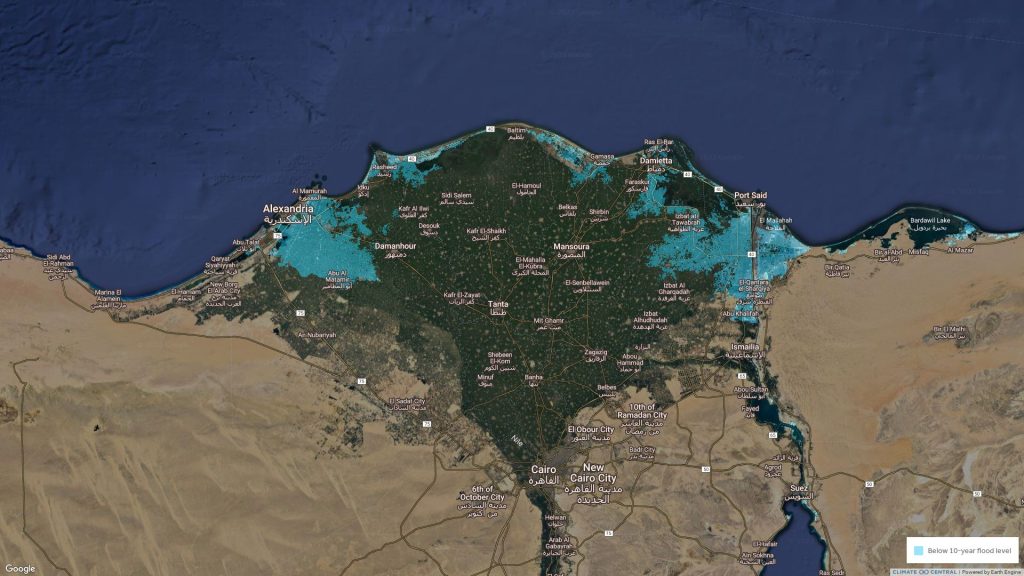At a certain level, we all sort of acknowledge the existential threat that climate change poses, but our steady and slow descent into a disastrous future makes the threat of climate change seem difficult to imagine and distant from our present. We’ve heard about the dangers of how a climate breakdown could cause crops to fail and rivers to dry up leading to starvation, climate refugees, and even war as freshwater becomes a contested resource, but a sense of urgency and real action taken by the world’s nations is lacking. The Institute of Economics and Peace released a terrifying report predicting that climate change and natural disasters will have created 1.2 billion climate refugees by the year 2050 and lead to 250,000 deaths a year, many of which will come from the Arab world, which remains particularly vulnerable due to rising temperatures in an already hot climate, water shortages in an already water-starved region, and rising sea levels as the polar ice caps melt.
To visualize the uncertain and worrying future we face, we took a look at the threat of rising sea levels in the Arab world using satellite and climatic data. Using Climate Central’s coastal risk screening tool, we used the United Nation’s Intergovernmental Panel on Climate Change’s (IPCC) Leading Consensus (2021) data for projections fifty years from now in 2070 according to our current trajectory of global warming to get an idea of the drastic ways the region will be changed by climate change. The projections and maps showing blue areas of sea sweeping over cities present a terrifying image of the future; however, the data used are the most commonly accepted predictions, and many scientists argue that we are actually facing an even greater rise of sea levels in the next few decades. While the aridest region will suffer from increasing shortages of freshwater for drinking and crops, much of the Arab world is also at risk of rising sea levels that may empty cities and render surrounding farmland useless as salt water poisons the soil. The IPCC has given stark warnings that cities in the region in just a matter of decades are set to become islands or be completely swamped by rising sea levels unless the nations of the world commit to taking drastic action.
Abu Dhabi
The city-states of the United Arab Emirates and Abu Dhabi in particular stand out as particularly vulnerable areas to rising sea levels, sitting just above the sea level. While the immense wealth of the UAE has been able to construct wonders of the modern world like the Burj Khalifa, it will not be enough to fully protect this city unless global action is taken. Around 85% of people in the UAE live along the coast and remain incredibly vulnerable to rising sea levels, which if left unaddressed by the global community could flood the entirety of all major cities in UAE that at their highest point sit only nine meters above the sea level. The effects of this are potentially catastrophic, pushing people out into the desert and destroying the UAE’s economy.
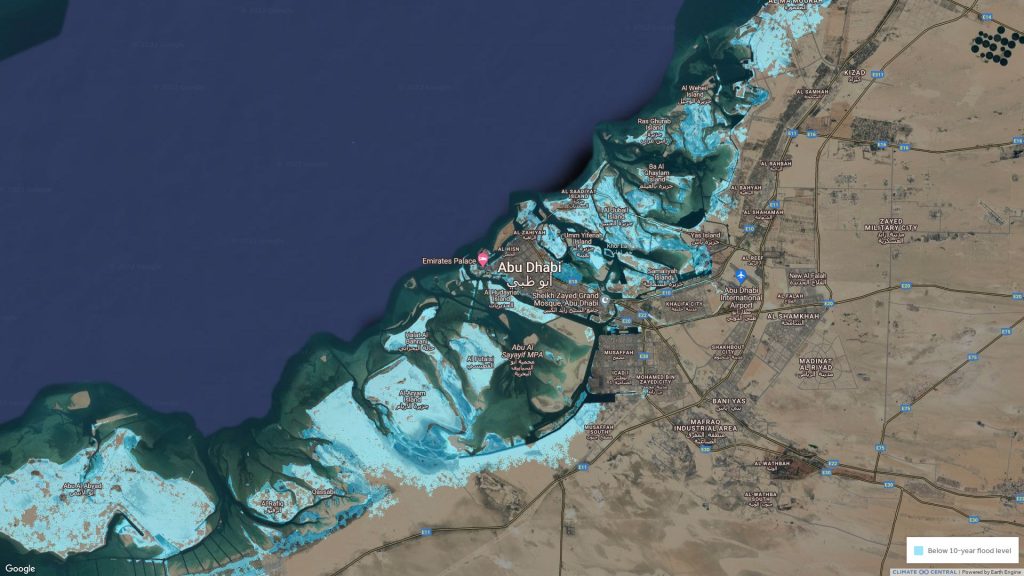
The National quoted Dr. Bergaoui, who spoke at the Arab Future Cities Summit in Dubai, stating that “the situation will only get worse if we do not start to take action to avoid depleting our resources and transforming the landscape of the world.” However, accepting the inevitability of significant sea level rises; the summit also hosted numerous city planners and architects that were pushing for flood defenses and the relocation of neighborhoods so the city will be better prepared for what is to come. While the UAE may be better prepared than most countries in the world, the future still presents an existential threat to the nation as a whole. Many other Gulf nations like Bahrain, Qatar, and Saudi Arabia’s coastal cities face a similarly catastrophic future, with sea level rises predicted to flood much of the coastline, destroying neighborhoods and pushing the nations into economic turmoil.
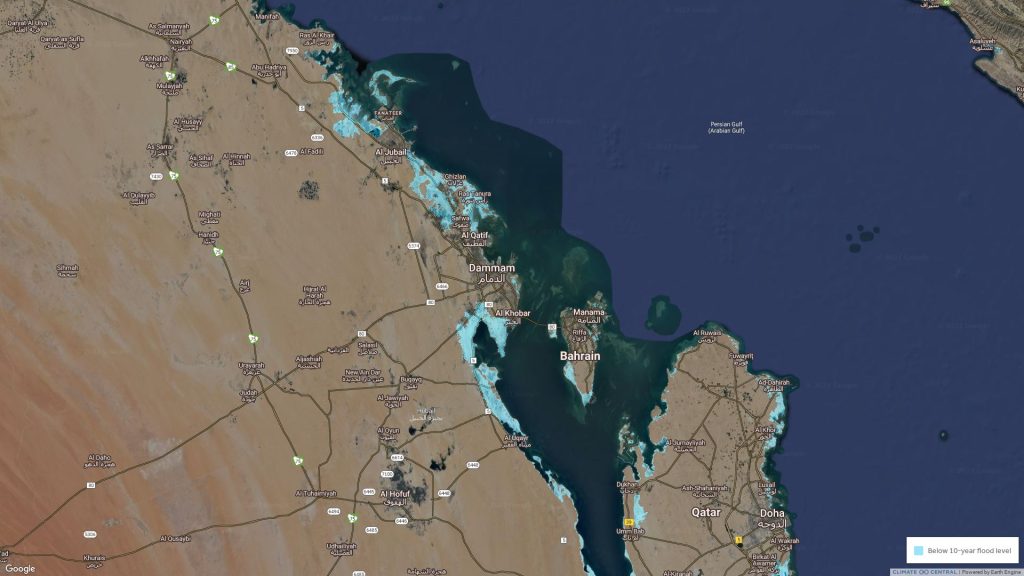
Basrah
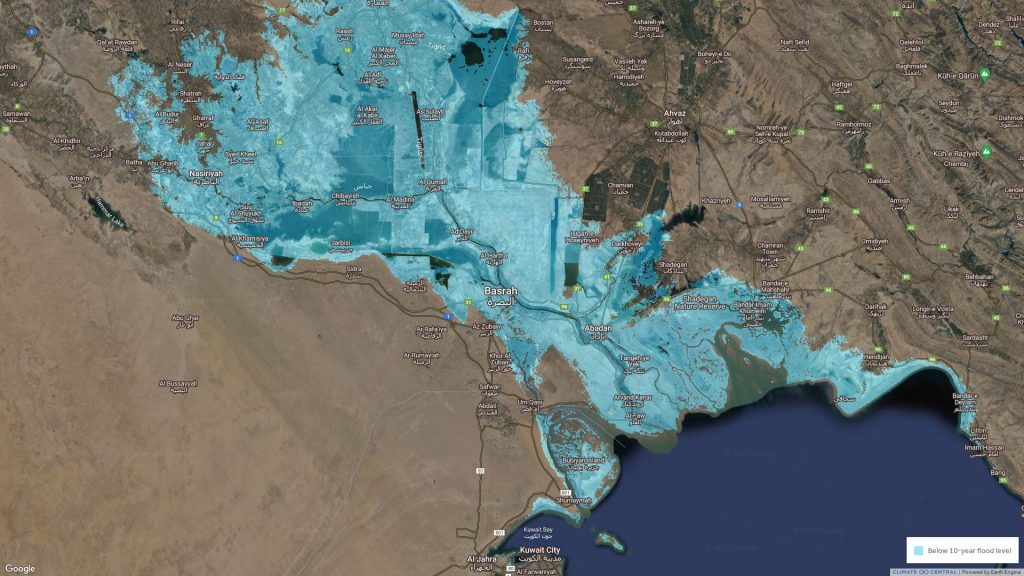
Few cities have as worrisome a future as Basrah, with even some of the most optimistic climatic projections showing the city enveloped by the sea in just a matter of a few decades. On the flood plain of the Shat Al Arab river that opens up into the Arabian Gulf, Basrah is situated just above sea level in danger from both the incoming sea and flood waters flowing from northern Iraq. With a population of one and a half million, the exodus of Basra’s residents adding to the already large number of internally displaced Iraqis throughout the country would amount to a humanitarian and food crisis that Iraq would struggle to overcome.
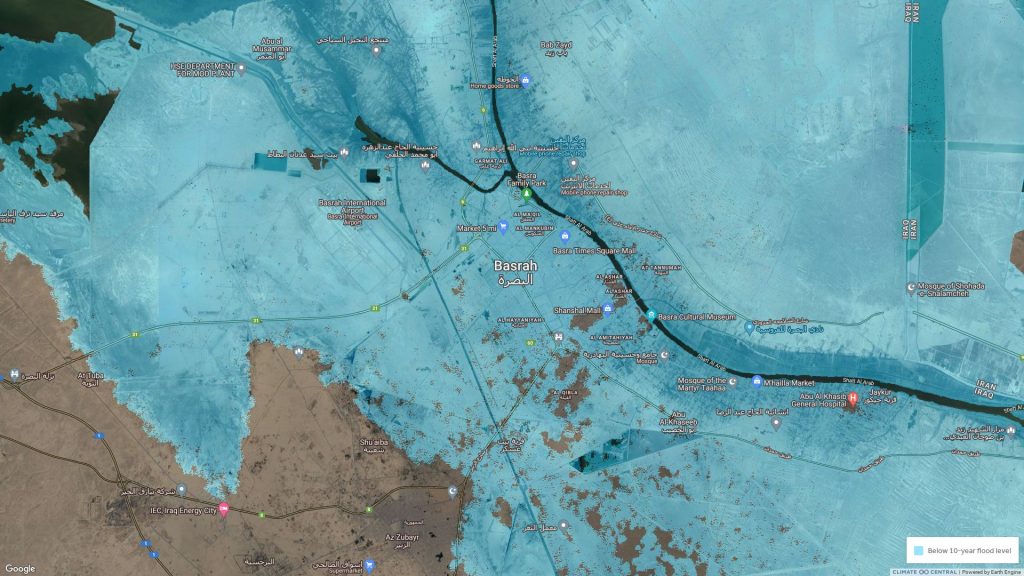
Iraq as the world’s fifth most vulnerable nation to climate change, however, faces threats from multiple directions. While salty waters are predicted to flood the south of the country around Basra, emptying cities, and killing the surrounding countryside’s crops, north Iraq is facing drought due to the lack of fresh water from rain or the increasingly starved Tigris and Euphrates rivers. Even with just a 30 cm sea level rise, the Planetary Security Initiative has detailed how the sea would pollute almost all surrounding farmland with salt water throughout the region and cut off Basrah from the surrounding area.
Alexandria
With Alexandria’s population of only its most central districts accounting for over five million people and the surrounding areas reaching around eight million, the entire population of greater Alexandria is larger than the entire population of many European nations. Looking at sea level predictions only fifty years from now, the country is on track to become essentially an island surrounded by sea, potentially making the city uninhabitable for the most part. For comparison, the number of people in just the metropolitan center of Alexandria that could potentially be made climate refugees would amount to almost exactly the same amount of registered refugees from Syria across the world. Adding other climate refugees from the region and cities like Port Said that similarly face becoming islands in the near future, the looming climate refugee crisis is hard to overestimate. On top of a disastrous climate refugee crisis, rising sea levels in the Delta are also predicted to destroy a third of the area’s agricultural output if the sea rises by just one meter.
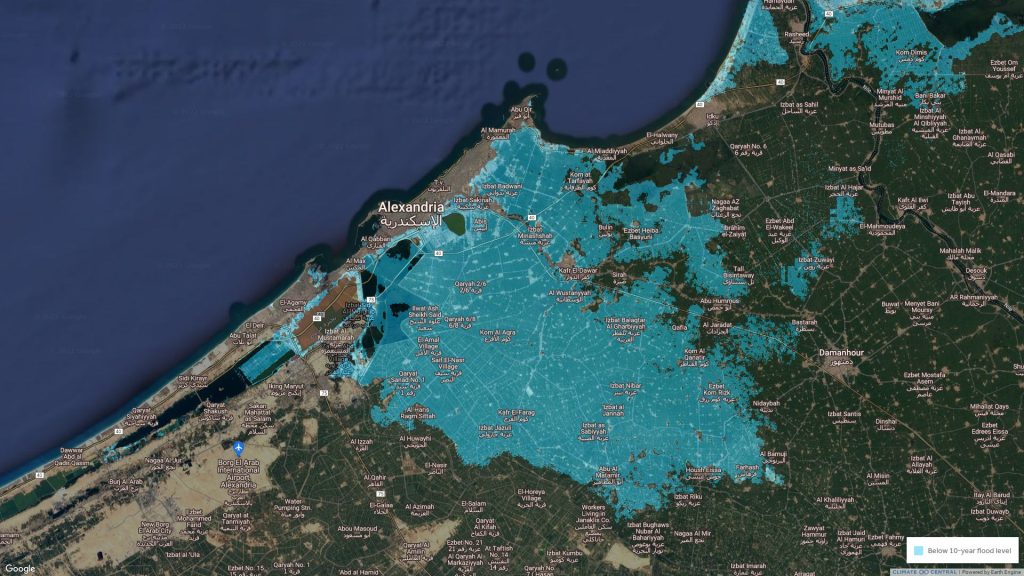
While the United Nation’s most optimistic scenario predicts that by 2050 a million and a half people will be forced to flee Alexandria as a third of the city will be submerged underwater, considering the failure of world leaders to take real action on the climate, the reality may be worse. Alexandria is particularly vulnerable because not only are sea levels rising but because the city itself is sinking by around three millimeters a year due to the marshy terrain that the city is built on. While there have been heavy investments in flood defenses for the city and even plans to build a flood wall covering the whole of Egypt’s northern shores, many experts worry that it will not be enough unless more serious global action to stop rising temperatures is taken.
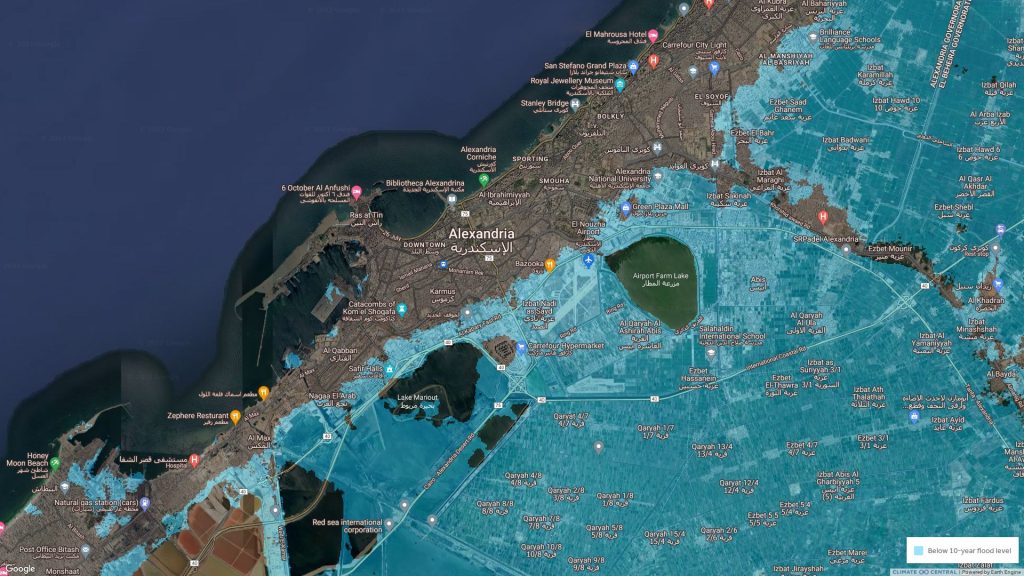
Unlike sudden disasters or threats that emerge and rally people to take action, climate change slowly creeps up on us, lulling us into a sense of security despite the monumental and disastrous effects that it will entail. However, with the vast majority of countries around the world failing to meet decarbonization targets and the world’s leading climate scientists warning that attempts to limit global warming to two degrees Celsius will fail by 2050, the IPCC is warning of irreversible and catastrophic climate change unless the nations of the world agree to drastic climate commitments and keep to their promises. On our current trajectory, cities in the region like Alexandria and Abu Dhabi may become deserted islands while Basrah will be completely submerged, leading to millions of climate refugees and the destruction of precious farmland. With COP27 taking place in Sharm El-Sheikh and time quickly running out to prevent the worst effects of climate change, scientists and a growing number of world leaders are increasingly stressing that however distant the dangers of climate change may feel, the danger is real and the time to take actions is now.


